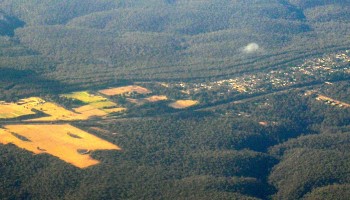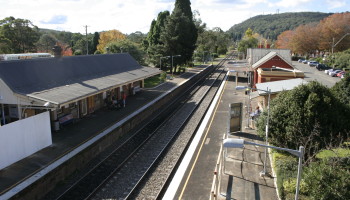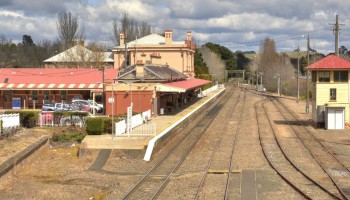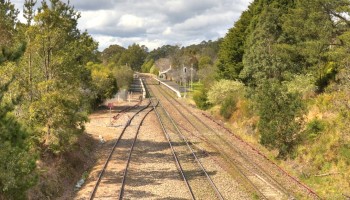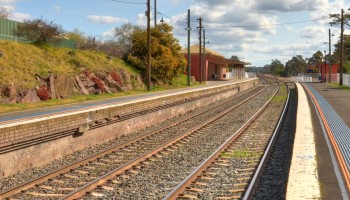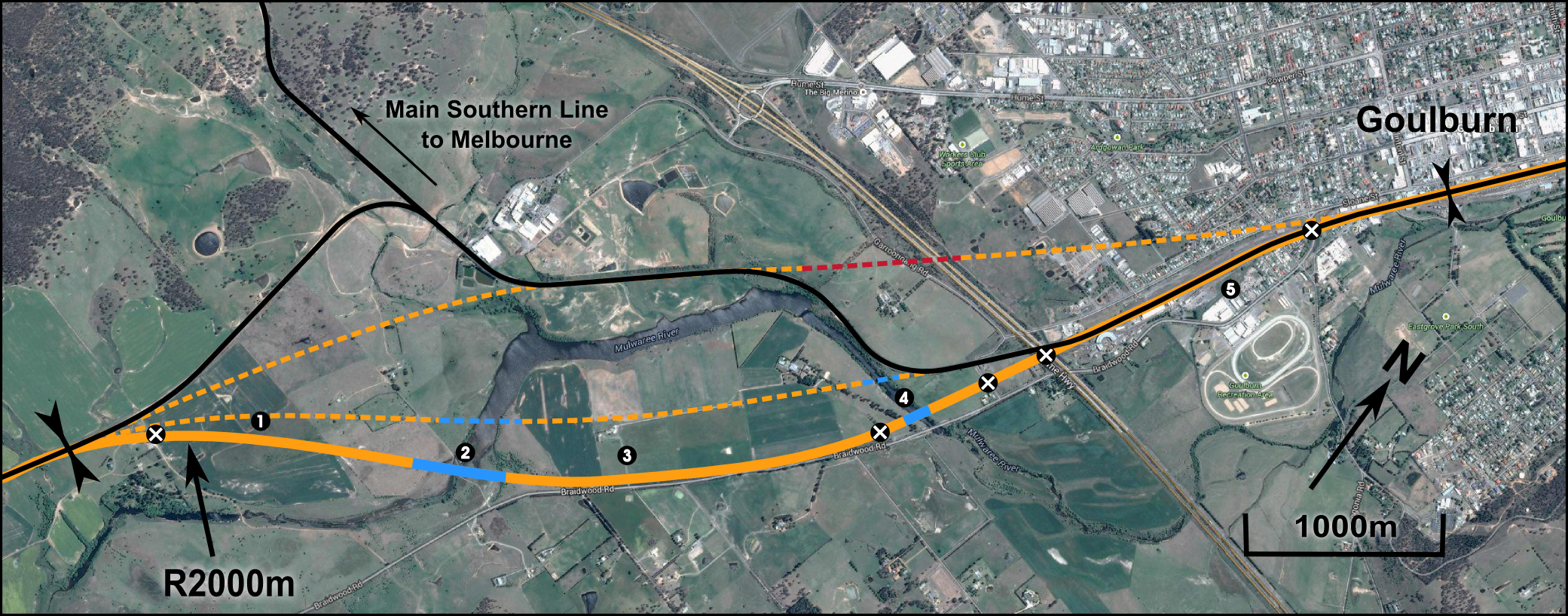Upper Nepean
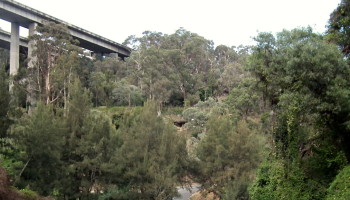
In this 20-kilometre stretch, the line enters a sustained gentle-to-moderate descent from the Southern Highlands down into the Sydney Basin, dropping over 300m in altitude. There aren’t a lot of plausible corridor options here; the Hume Highway already occupies by far the best one, and it is of sufficient straightness and flatness for a high-speed rail alignment.




